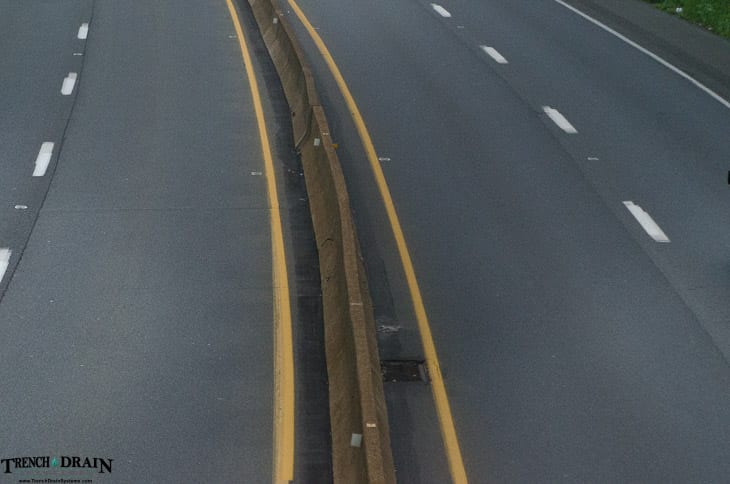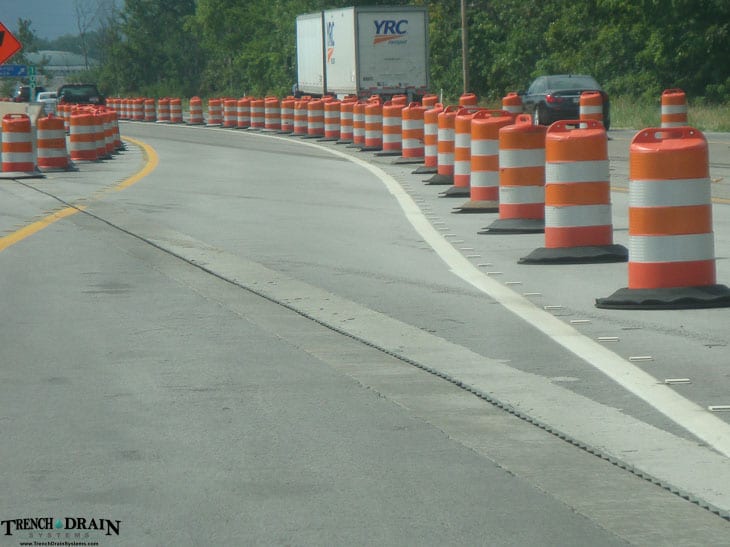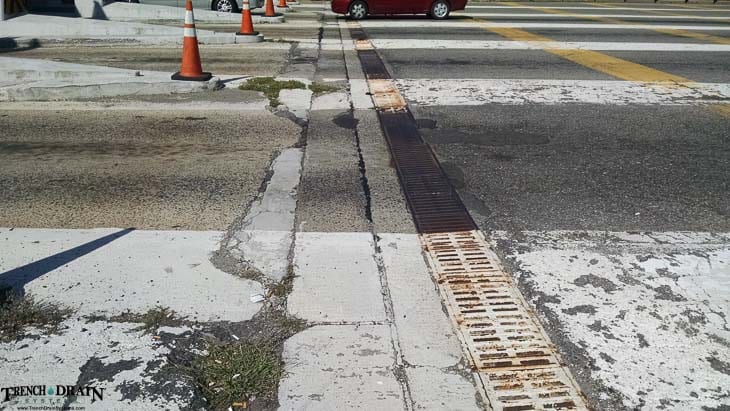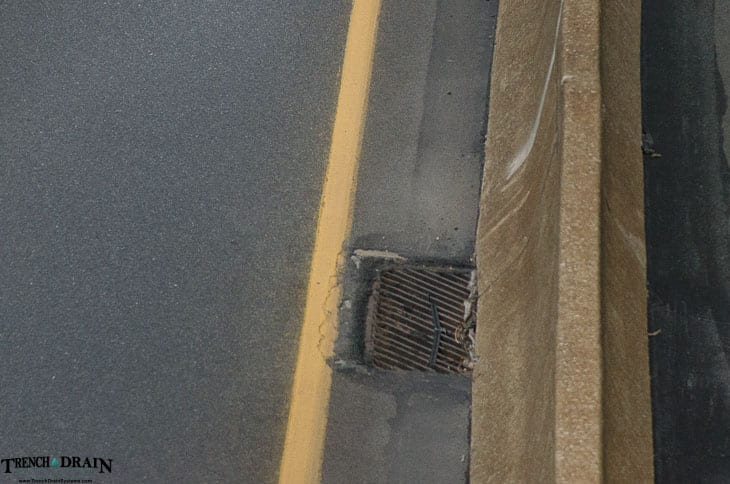Without containment, storm water can cause traffic hazards on highways. Rain storms send water rushing across highways and bridges, leading to increased runoff into the environment and a greater risk of hydroplaning due to sheet flow.
Highway engineers use two types of drains to control surface water on highways:
- Linear Drainage Systems
- Catch Basins (Inlets)
Every state has its own standards on highway drainage, but the basics of highway drainage systems are the same across the country.
Linear Drain Systems
High capacity linear drains are designed to be installed in long runs across open surfaces where sheet flow (a shallow layer of water flowing over the ground) is most likely. They play a big part in eliminating sheet flow on highways and other broad, flat surfaces.
The efficiency of linear drain systems depends on several factors:
- How deep is the water runoff?
- How wide is the drain’s opening?
- How much water can the drain hold?
- How long does the drain run?
Because of their tendency to catch fine debris, linear drains are not recommended for sag locations – low points where water pools on the highway. They are, however, excellent when installed to prevent sheet flow across roadways.
Linear drains can be divided into trench drain systems and slotted drains. I’ve seen both on the road, though slotted drain systems seem to be the most popular.
Slotted Drains
Slotted drains such as Zurn Z888 Hi-Cap, Contech and SlotDrain GV Series are placed along portions of highways to prevent sheet flow from disrupting traffic.
The Zurn Z888 Hi-Cap slotted drain system is designed for high volume areas such as airports, parking lots and highways. Equal in strength and flow rate to corrugated steel slot drains, Zurn Hi-Cap slot drains are lighter and easier to install than their counterparts.
Contech began making slot drain from corrugated steel pip over 40 years ago. They actually trade marked “Slotted Drain”. The corrugated steel pipe is cut and fashioned with a 1.75” wide slot extension that drains large sheet flows off inclined highway surfaces.
SlotDrain designed its GV Series slotted drain to capture high water volume from wide highways and airport tarmacs. Several innovative features increase the system’s durability, allowing it to withstand some serious loads.
Trench Drains
With a wider surface area than slot drains, trench drain systems need a secured top grill. The top cover protects the underlying channel from stray vehicles and prevents accidents. It also tends to catch the larger debris from runoff – such as sticks, plastic bags – so regular maintenance is required.
Two top trench drains for roads and highways are Polycast 900 Series and the 3000 Series, which is now owned by Trench Drain Systems.
To illustrate the diversity of highway trench drains: the 900 Series is a 6” polymer concrete channel with a non-removable ductile iron grate. The 3000 Series, with a heavy duty ductile iron grate and an 8” fiberglass channel system, handles a much larger flow – up to 3,000 gallons per minute. And, both these drains are improvements on poured-in-place foundry drains.
Inlets
Inlets are best used in sag locations where water pools in the median. They are the opening to a catch basin and part of an underground storm water sewer piping system that eventually leads to a stream or river. If I had to guess, I’d say inlets are the most common drain used on American roads.
There are two types of inlet opening: grated and curb inlets.
Grated inlets set above the basin and have the added feature of separating large debris from the water stream. Smaller debris, that makes it through the grate, becomes part of the suspended matter in the storm water. Large trash and debris caught in the grate can lead to clogging when not maintained.
Curb inlets provide an opening in the curb wall so storm water can drop into the basin below. A metal bar sometimes spans the opening in an effort to keep large debris out of the storm system. Curb inlets are safer to bicyclers and pedestrian traffic because of the absence of grate openings. However, this type of inlet is used commonly on roadways where pedestrian traffic is minimal.




